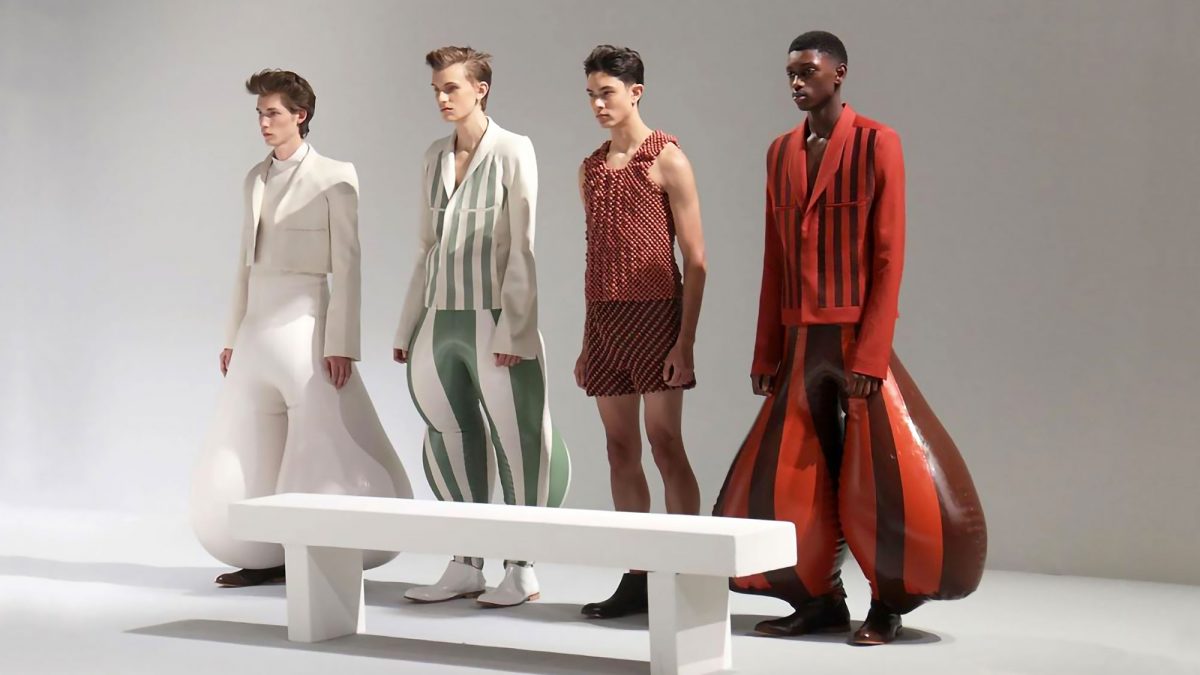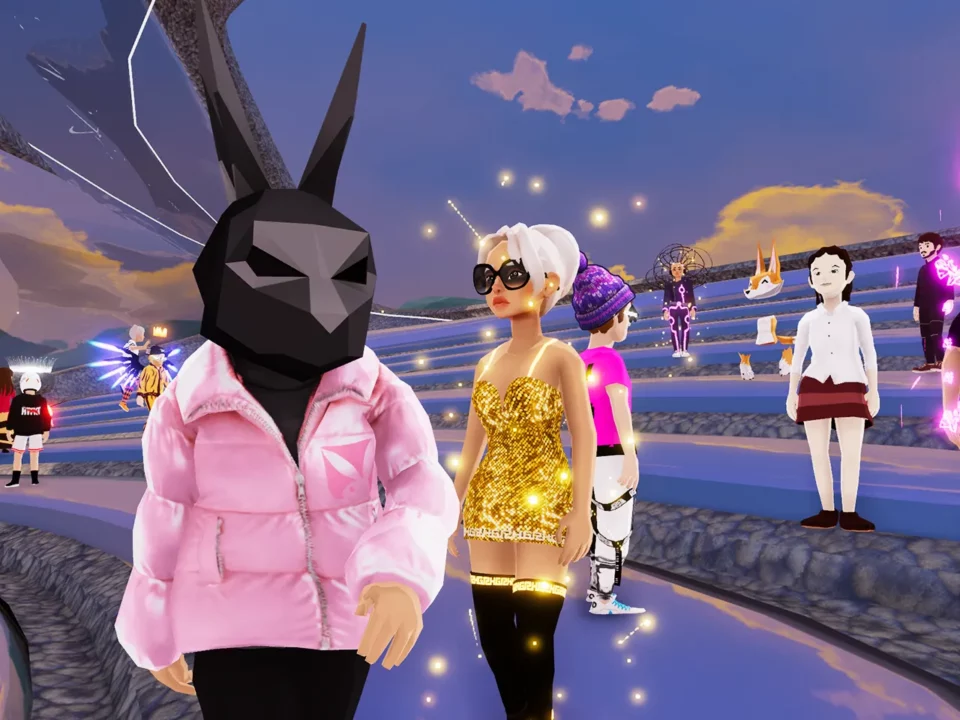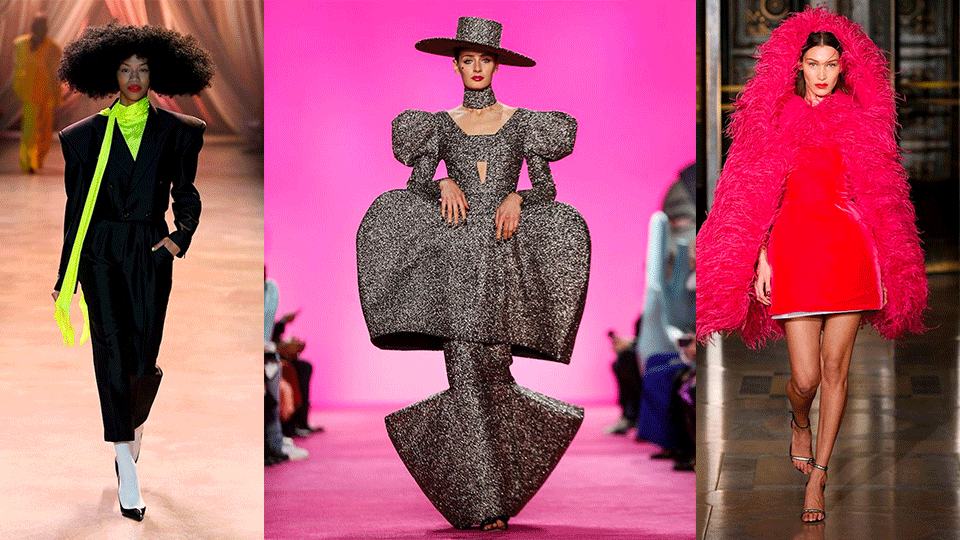- À New Wave to Fashion, À New Way of Living. Download Now on iOS Android Canada SS22
- hello@alahausse.ca
Designer Spotlight: Harikrishnans Inflatable Pants are Catching Everyone by Surprise

The Fashion Life Cycle : Finding the Right Place for your Clothes at the End-of Cycle
August 17, 2021
Automation & Fashion on Demand: Producing as Ordered
August 22, 2021
Written by: Hana El-Sharabasy
Newly graduated London College of Fashion student, Harikrishnan, is catching everyone by surprise with his balloon pants. The 26-year-old designer completed his undergraduate study in fashion design at the National Institute of Fashion Technology before moving to London for his MA.
Intro to art and design
Hari’s father was an artist himself, primarily doing realism. His father served as his first inspiration and introduction into the artworld. Some of his first artworks were replicated anatomical drawings. Hari’s personal journey into life drawing gave him a proficient knowledge of the human body that he applies in his fashion design works.
Fashion Design vs Sculpture
He has said, “I attempt to blur the boundaries between clothing and high art with disruption at the centre of my work”. Many artists debate the line between fashion design, and wearable sculpture. One one side of the spectrum is everyday clothes, that are mostly concerned with practicality and wearability. Opposing this is wearable sculpture, that despite its name is not very wearable at all. These fashion items are primarily concerned with aesthetics and often include elements that deem them unwearable off the runway. Many critics group these into fine art sculpture rather than fashion because they are merely sculpture pieces that concern the body.

Finding a different perspective
In his graduating collection, Haris models wore inflatable latex pants paired with a structured blazer. Inspiration struck one day while walking his dog. He was inspired by the distorted perspective his dog has from such a low angle. “The thought of him seeing me as a giant figure or not seeing my head at all was intriguing, so I decided to reimagine the people around me through the game of distortion – detached from the stereotypical, pre-determined notions of the human perspective”.
Latex was the perfect material for this project, considering its flexibility gave him no limitations. Considering sustainability, latex is among the worst materials for the environment. It’s non-recyclable properties give it a linear lifespan. Haris solution was to use primarily end of roll scraps that would otherwise be thrown away. His limited material would require him to patch together his creations that coincidentally also give him the ability to create the rounded structure that is the most eye catching element of his designs.

Jean Paul-Goude
Hari has taken inspiration from french photographer Jean Paul-Goude. Throughout his lifetime, Goude has produced many iconic works in the realm of editorial photography. He has photographed almost all the covers for Grace Jones’ discography and was even the man behind Kim Kardashian’s magazine cover that “broke the internet”. Beyond those two, Hari was especially inspired by Goude’s collage technique that distorted his subject. The tedious process required him to cut small slivers of his photography and glue them together before rescanning them. Hari reimagined this technique when patching together latex to achieve the distorted figure.
Hari’s Promising Future
Although the designer hasn’t set any definitive path for himself, his successful introduction into the industry has opened up lots of doors. Currently, none of his work is available for purchase, but solely visible on the runway, and all over the internet of course. Hari is constantly experimenting and sharing his new textile creations on his instagram. He has said he wants his work to excite people, make them speak and think. Mission accomplished Hari, the entire fashion world is talking about you.
Via ÀLA.HAUSSE‘s Multi-functional and Multi-purposeful Fashion Ecosystem- BUY/SELL/RENT/LEND/ (swap BETA 2021) mobile application, INDIVIDUALS & brands (BETA 2021) are encouraged to REBUY, RESELL, REUSE and UP-CYCLE their personal “Closets” aka Clothing Assets, along with overstock inventory and samples. Through this consumerism habit shift we indirectly slow down the urgency on fashion’s carbon footprint, aiding sustainability as a whole.
BETA Early Access Application Now Opens SS21 iOS Android
with Stories on www.alahausse.ca
#ALAHAUSSE #WEARYOURPURPOSE #HAUSSEPEOPLE
References:
- https://www.itsnicethat.com/news/harikrishnan-ks-fashion-180320
- https://www.itsnicethat.com/news/harikrishnan-ks-fashion-180320
- https://www.dezeen.com/2020/02/24/harikrishnan-lcf-inflatable-latex-fashion/
- https://vexclothing.com/blogs/latex-fashion-news/designer-spotlight-harikrishnan
- https://www.iloveoffset.com/jean-paul-goude/
- https://www.wmagazine.com/story/jean-paul-goude-originals-interview



